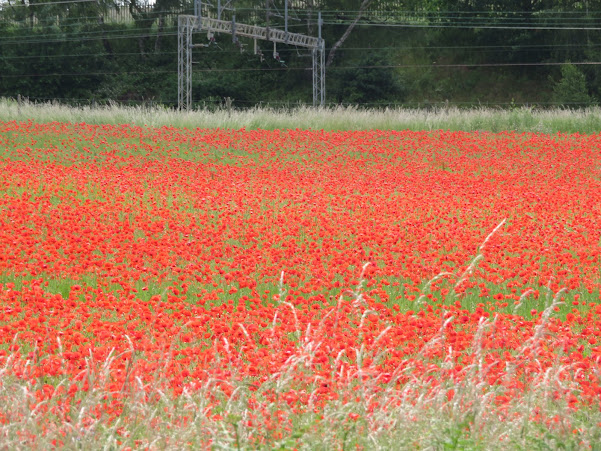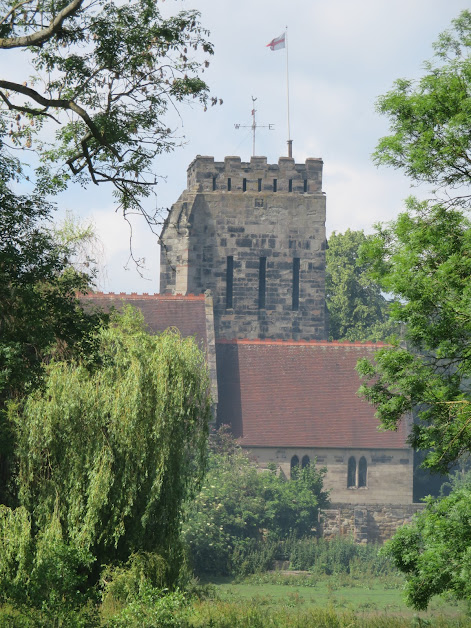Strangely we were woken early by a cockerel! I'm pretty sure it wasn't in the old hat factory so it must have been in somebody's garden. I wonder what the neighbours think! We weren't in a rush today as Helen was walking into Atherstone to get the paper and some milk whilst I did some jobs including my COVID test. By the time she got back there was chaos at the lock as there were seven waiting to go down. It was gone 1100 by the time the queue was down to two boats so we let go and headed to the top lock.
Rothern's Wharf next to the water point and services looks good with its preserved wharf office. It is a shame the basin opposite has been filled in and built on. It was known as Minnion's Wharf and would have caused trouble with boats heading up and down the locks as in and out of the basin and the water point.
Not a very good photo of the nice flower beds looked after by one of the volunteers. The old basin entrance was about where the bow of the boat in front is. When we got to the lock it looked like there had been 12 boats down and only two up.
We usual work with Helen driving when we are going down locks as I can leap across lock gates, plus I can quite often close the off side gate from the boat when going up.
Getting close to the bottom Helen approaches Lock 9.
The end is insight and for the last few we have had boats to swap with, all be it we had to wait for them to leave their lock. We got to the bottom in just shy of three hours. Just a tad over two hours on the way up! I'm glad it wasn't raining.
As we approach Hoo Hill and the outskirts of Polesworth the poppy field was even more full of them. A really colourful sight.
I thought Polesworth moorings would be scarce today so we stopped in the open before the houses. We had a pretty good view of the Obelisk.
The monument on Hoo Hill was raised to mark the site of the Chapel of St. Leonards. An inscription on it states it is the site of the chapel of St. Leonards at Hoo. Demolished 1538, 30th Henry VIII. Doesn't quite work as Henry Vii became King in 1509! It is thought that the burial ground of the church was uncovered when the Trent Valley Railway Line was being constructed in 1847. It is likely Sir George Chetwynd of Grendon Hall commissioned the obelisk in the 1850's/60s. Wen the railway line was doubled the monument was moved to the present site.
in 827 King Egbert of Mercia founded an Abbey in Polesworth and his daughter Edith was the Abbess. The place was demolished during the Dissolution and over time the stones were largely robbed. This is the Abbey Church of St. Editha seen from the Abbey Gardens.
The coming of the Coventry Canal stimulated mining in the area, and during WWII due to the shortage of coal this area of {olesworth was opened for open cast mining. Later it was landscaped and is not the lovely Abbey Gardens with the River Anker running through it.
The Gatehouse led through to the Benedictine Abbey and was built mid to late 1300's and leads through to the Abbey Church. Parts of the church and this gatehouse are all that is left above ground of the Abbey.
Just down the road is the Nethersole School for Paupers. It was first endowed by Sir Francis and Lady Lucy Nethersole in 1638. This building was opened in 1818 by the Nethersole's Trustees and remained as a school until 1973! It was then used by the community before being converted to apartments.
Down the side of the doctor's surgery is the Tithe Barn, despite looking quite modern and seems to be used as a 'space' the tithe barn has been here from at least the 1880's.
We walked back to the boat without seeing anywhere to buy an ice cream so I had to make do with a bowl of cherries!












No comments:
Post a Comment